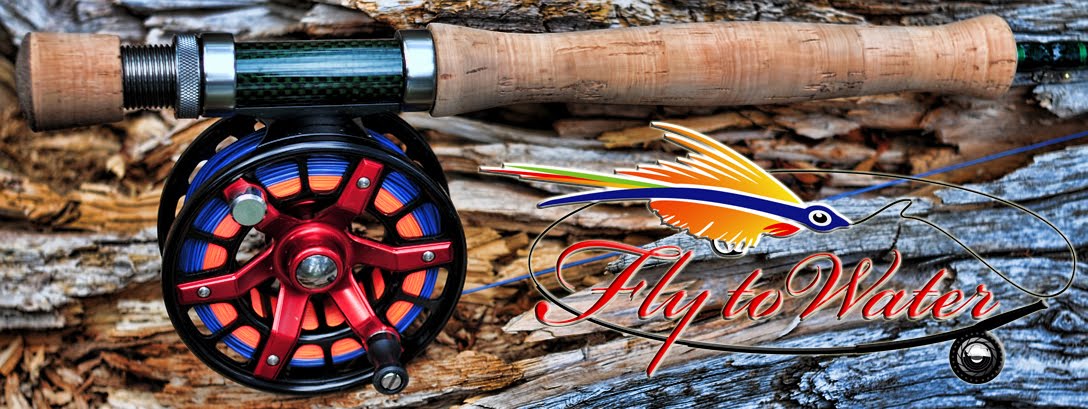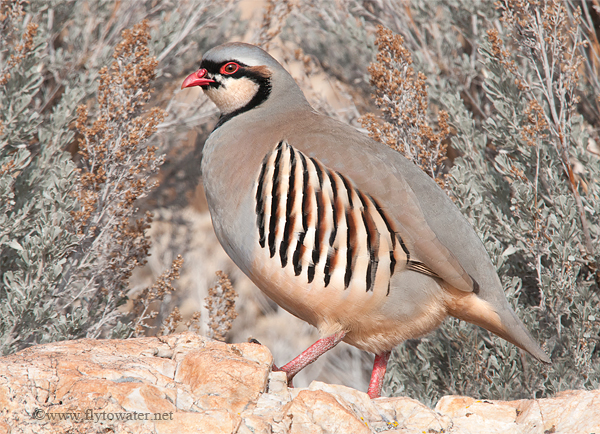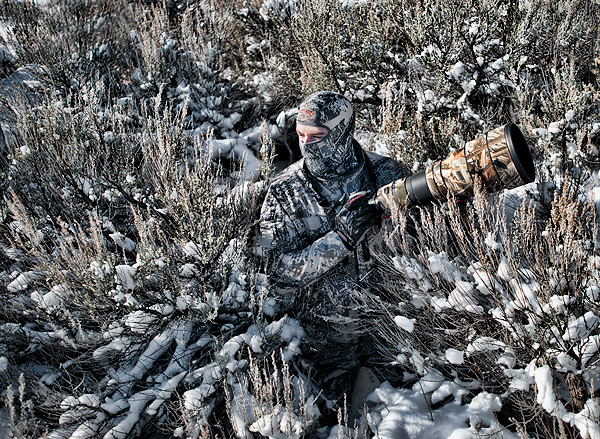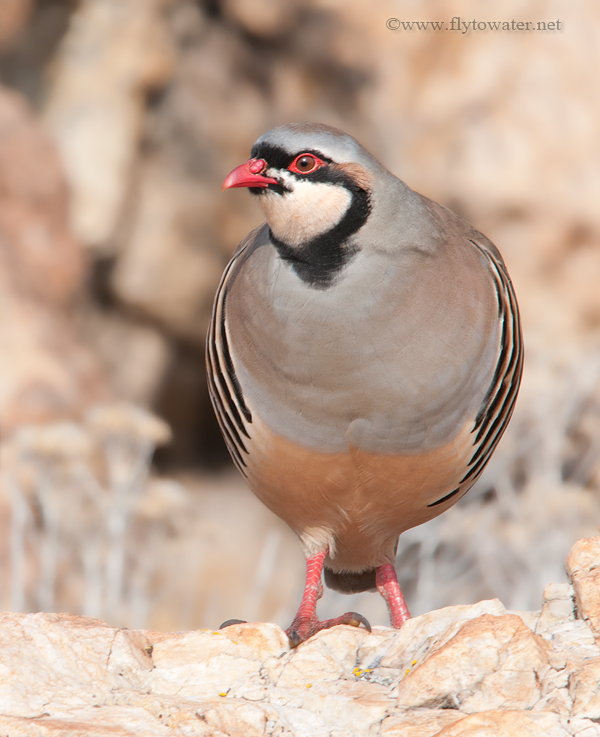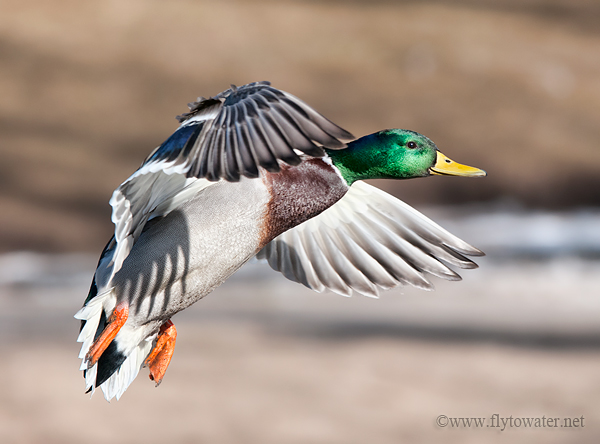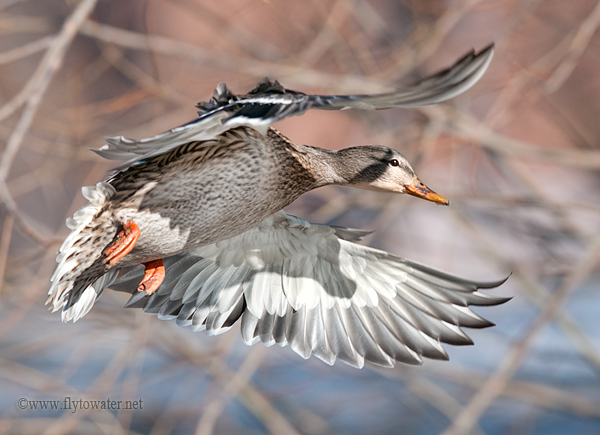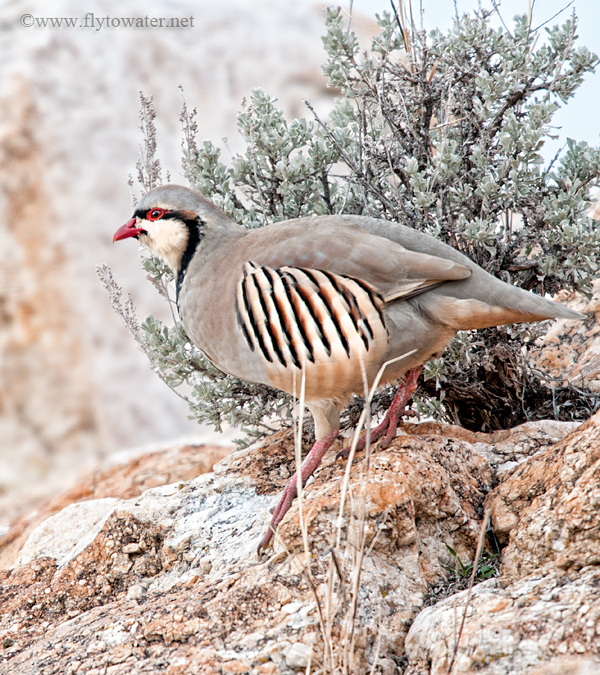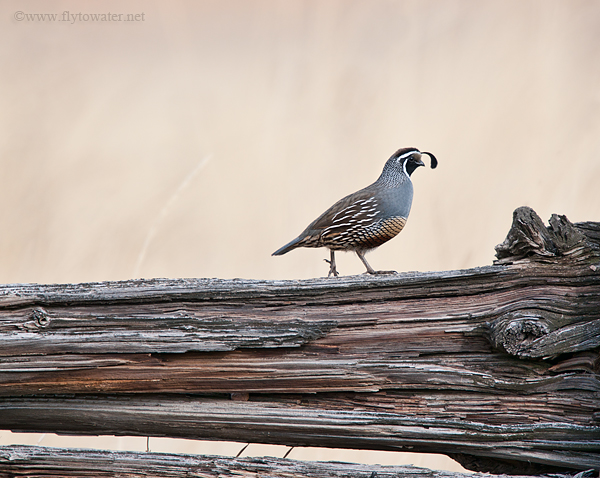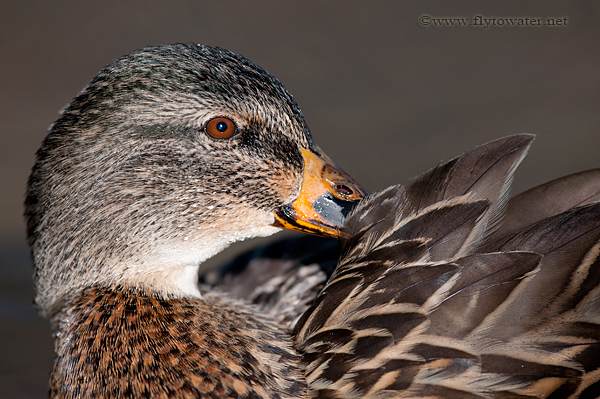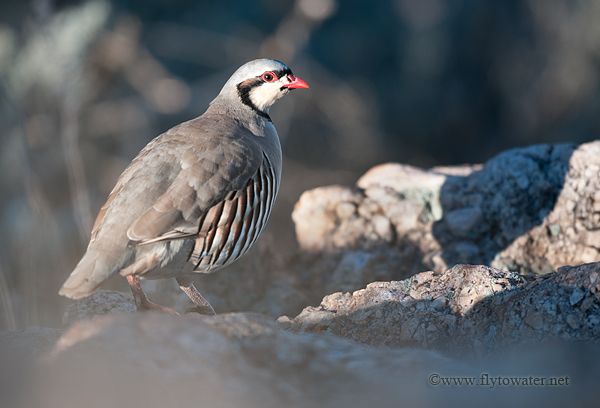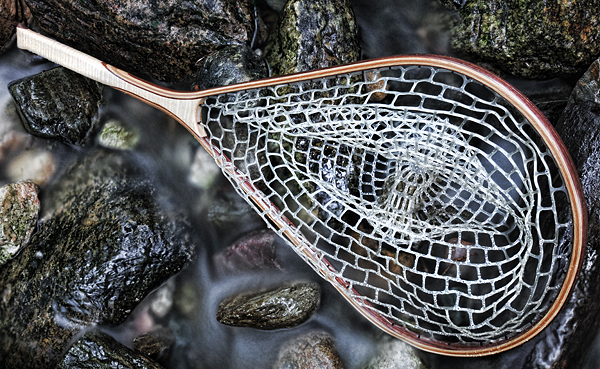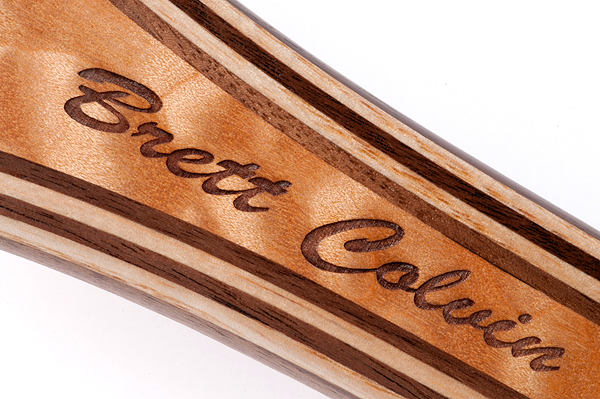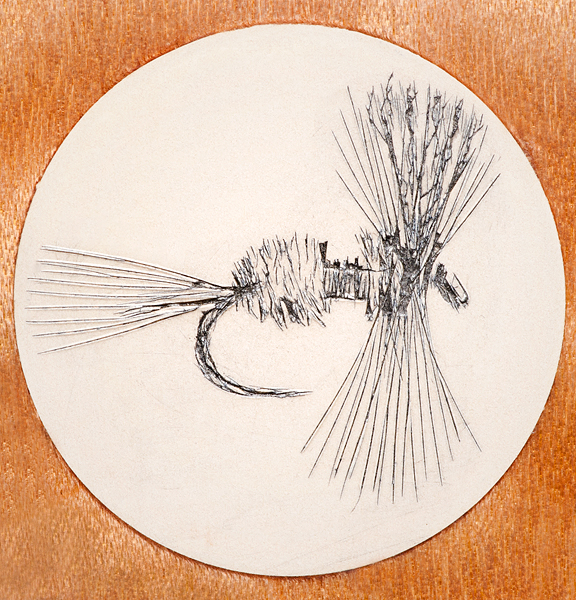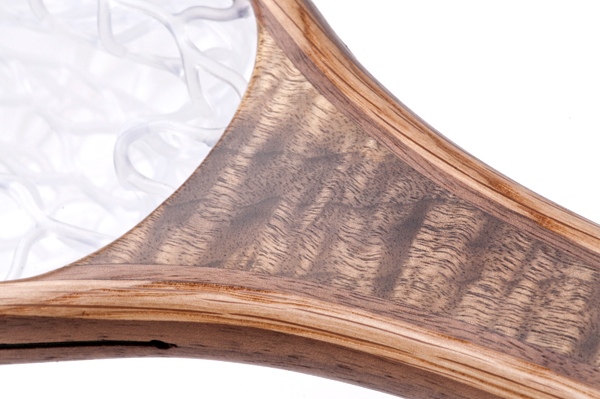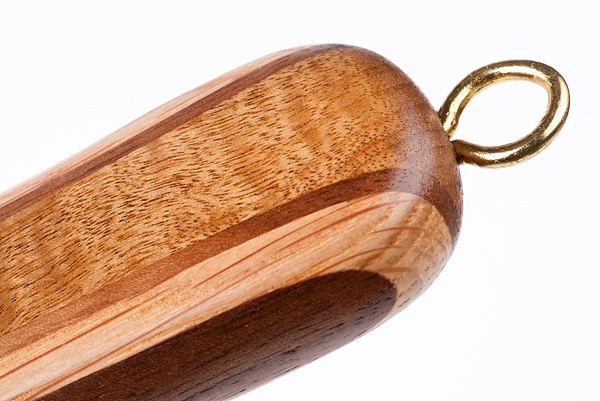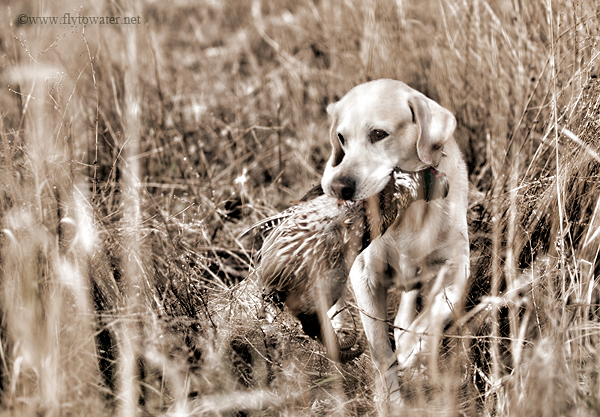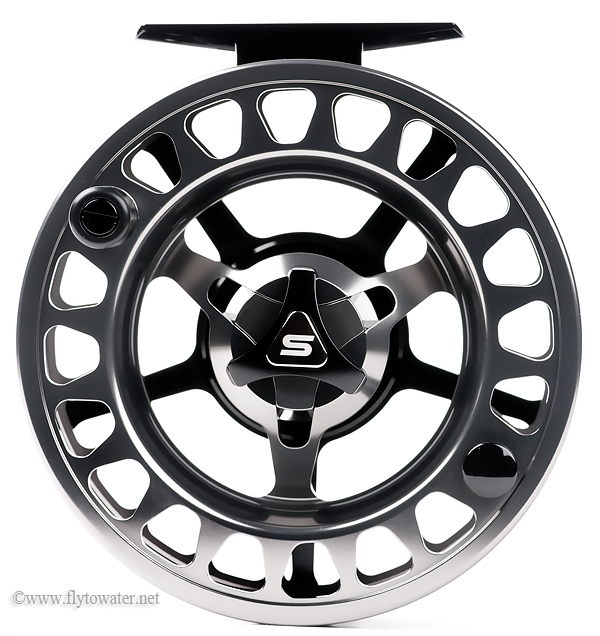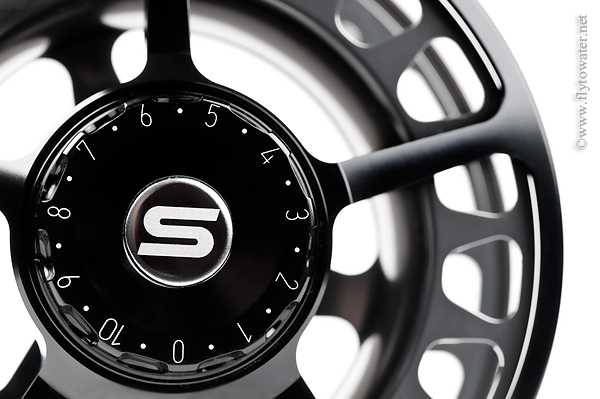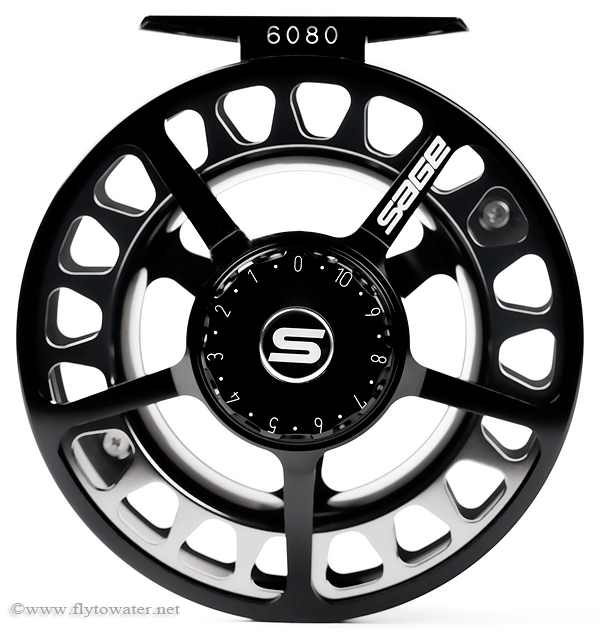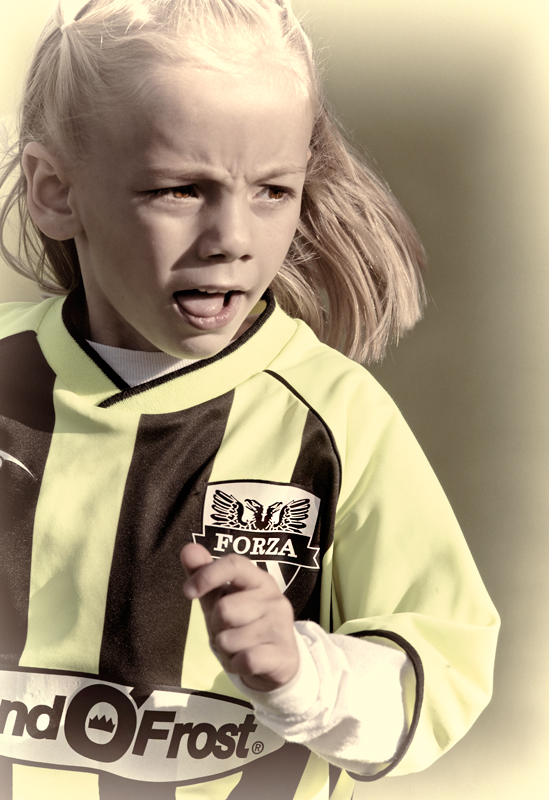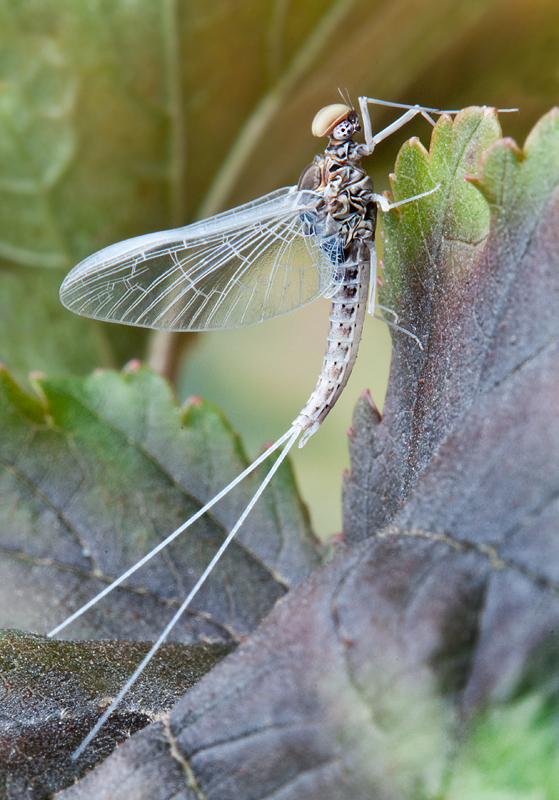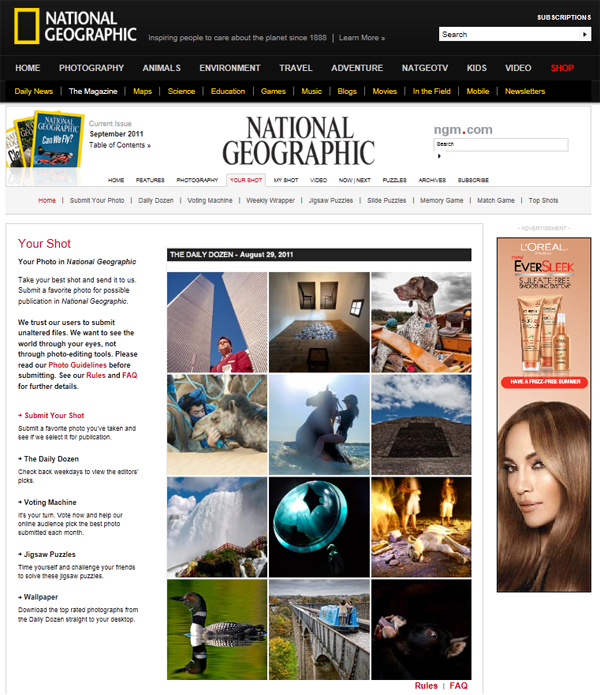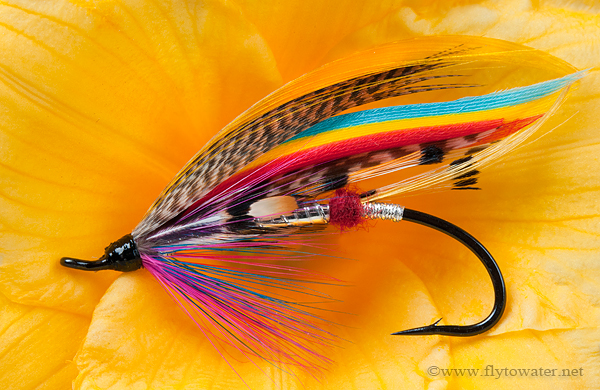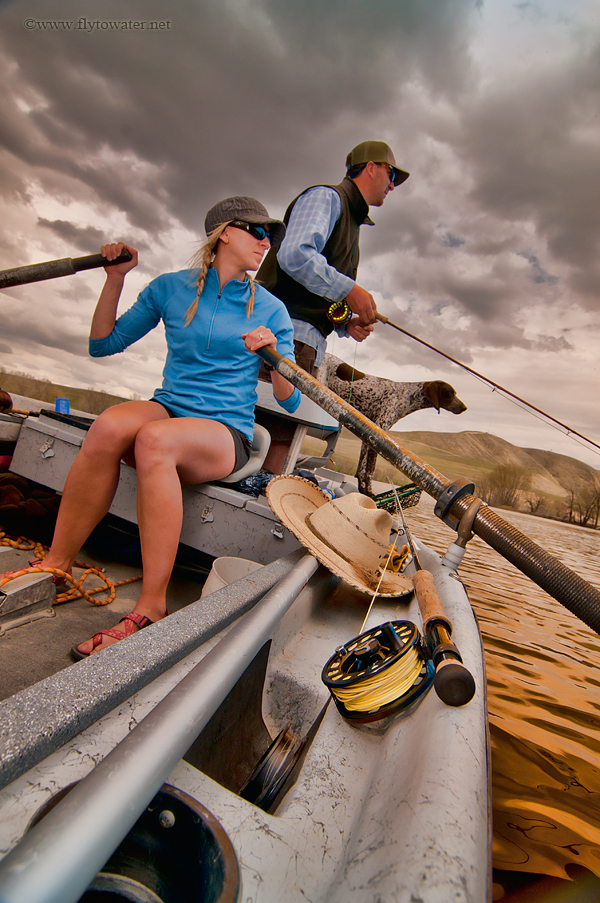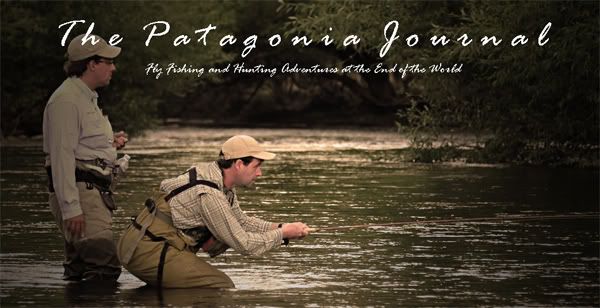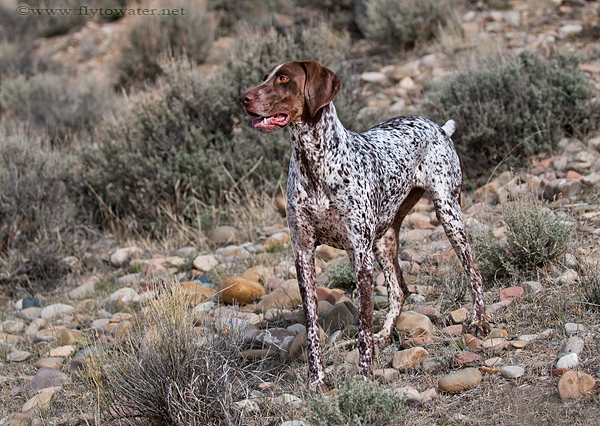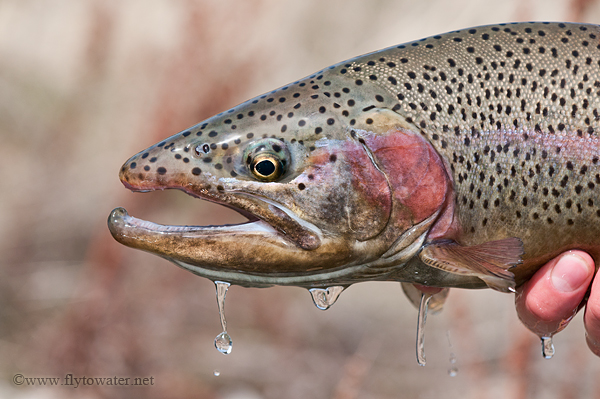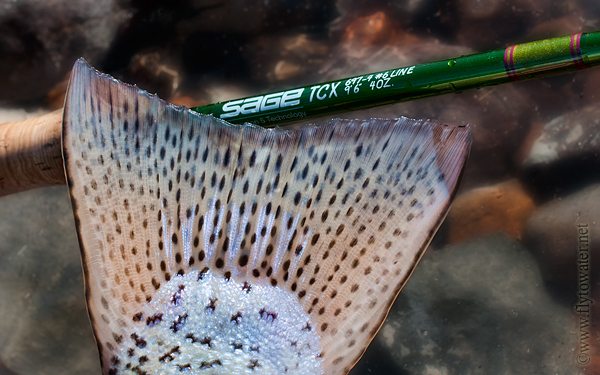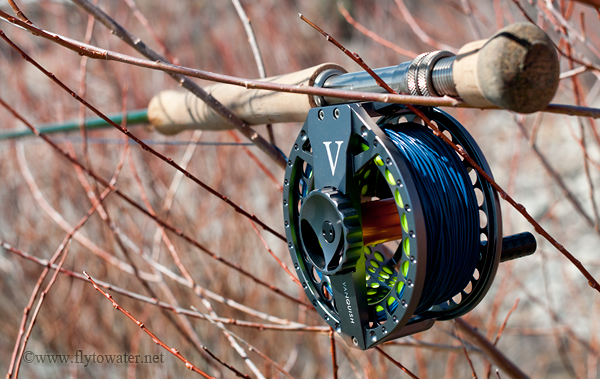I had been hiking for a while now. The ambient temperature was 14° F (-10° C), which was comfortable. A few years ago my outdoor wardrobe experienced some natural base layer enhancement courtesy of merino wool, which is a miracle fiber. Like your garden variety wool it insulates even when wet, but against the skin it does not itch and feels like fleece. Inexplicably it can also stave off odors for a remarkable amount of time, and it breathes extraordinarily well. I was glad to have my Icebreakers on this occasion. Incidentally, if you are one of my fly fishing readers, merino socks by this company are the dog's bollocks (meaning badass in the UK) for cold weather wading.
Chukar partridge were my goal for the day. Early in the Fall it's often possible to locate a covey by listening for calls, but typical of this time of year it was dead quiet. Wild birds soon realize their chatter is giving them away, and they start dishing out the silent treatment.
Hiking in the steep, rocky talus that chukars love with a 14-pound camera rig offers a pucker factor of about 9.0. Opportunities can be so unexpected and fleeting, I've never been able to successfully make use of a tripod, monopod, harness, or pack. It's all free-hand. At double the weight of a typical shotgun, and with the awkward size/shape of a big telephoto, the visual is like watching someone Riverdance on a cliff face while cradling a huge baby.
Presently due to insubordination on the part of my pulmonary system I stopped to catch a breather in a large boulder field. About 3 weeks ago I acquired the felicity of walking pneumonia and am still feeling the effects. After a minute or two, what I can only describe as a chukar whisper seemed to emanate from the rocks to my immediate left. The sound was barely audible, and far more subdued than I had ever heard before. My thought was that the call must have been more distant and I'd experienced a sound effect in the strewn boulders.
Following a few seconds of questioning the wisdom of combining thin air with cough syrup, I heard it again - "chuk-chuk." There were partridge about, and they were close. Really close - within feet. Over the last 25 or so years, I've hiked, hunted, scouted, and photographed in chukar habitat hundreds of times, and I can't say that I've ever managed to get nearer than 15 yards. Until now.
18 feet in front of me a mature, well-marked bird hopped up on a rock and was positioned ideally to catch the morning sun. Had I not been forewarned by the muted calls, which enabled me to raise my lens just in time, I have no doubt a flush would have been instantaneous. As it was, I captured a short series of images from spitting distance. At this range I believe my Sitka Gear Open Country camouflage probably made a huge difference, allowing me blend in under point blank scrutiny.
This was a great way to finish out 2011 - with a humbling opportunity that I was privileged to see through the viewfinder.
Nikon D300
Nikon 400mm f/2.8 VR - f/8, 1/320, ISO 400
Distance to Subject - 6 Yards/18 Feet
Tuesday, December 27, 2011
Devil Birds
Monday, December 26, 2011
The Eyes Have It
"Look at me when I'm talking to you!"
If you are a guy of they XY chromosome persuasion, chances are you have had this type of exclamatory remark flung in your direction. Due to a vast conspiracy between extroverts and chick flick producers, eye contact became an important, non-verbal communication element at some point in history.
While information technology professionals have been fighting this alarming and intrusive trend for decades via non-violent, downward gazing - such efforts have done little to stop the insanity.
Looking into the eyes establishes a connection. Similar body language is evident even in animals, where the direction of a stare or glance can have much deeper social meaning.
In wildlife photography, creating a linkage between the viewer and the image is paramount. Eyes are a critical component of the subject in this regard. Aside from intentional, artistic abstractions - successful images must capture the eye in sharp focus and without motion blur. This remains true regardless of distance and whether you are capturing a tight shot or broader environmental portrait.
It can be Hell's own fun tracking focus on the eye of a fast-moving bird while experiencing a fit of the galloping shivers. It's a perishable skill that takes practice. If you're looking to improve your technique, my suggestion is to find a location with a lot of mid-sized birds like seagulls which tend to congregate in groups and fly around in circular patterns. Use the same gear you take into the field, and rehearse focusing on the eye. You might get some odd looks bombing photos of gulls, but it's a small price to pay to avoid the opprobrium of eye blur when it counts.
Don't settle, like Kate Hudson did for Chris Robinson. If your intent is not an abstraction of some kind - the eye simply needs to be sharp. Make sure not to confuse missed focus with motion blur caused by a shutter speed which is too slow. Waterfowl will usually have some wing blur at 1/1250, with action freezing well at 1/1600. As a starting point select the camera's shutter priority mode on one of these two settings and adjust as conditions require.
Happy Holidays - and thanks for reading during 2011! I wish everyone a fantastic New Year.
Nikon D300
Nikon 400mm f/2.8 VR - f/5.6, 1/1600 (8x Optical Magnification) - Hand Held
ISO 400
Distance to Subjects: 20 yards/60 Feet
If you are a guy of they XY chromosome persuasion, chances are you have had this type of exclamatory remark flung in your direction. Due to a vast conspiracy between extroverts and chick flick producers, eye contact became an important, non-verbal communication element at some point in history.
While information technology professionals have been fighting this alarming and intrusive trend for decades via non-violent, downward gazing - such efforts have done little to stop the insanity.
Looking into the eyes establishes a connection. Similar body language is evident even in animals, where the direction of a stare or glance can have much deeper social meaning.
In wildlife photography, creating a linkage between the viewer and the image is paramount. Eyes are a critical component of the subject in this regard. Aside from intentional, artistic abstractions - successful images must capture the eye in sharp focus and without motion blur. This remains true regardless of distance and whether you are capturing a tight shot or broader environmental portrait.
It can be Hell's own fun tracking focus on the eye of a fast-moving bird while experiencing a fit of the galloping shivers. It's a perishable skill that takes practice. If you're looking to improve your technique, my suggestion is to find a location with a lot of mid-sized birds like seagulls which tend to congregate in groups and fly around in circular patterns. Use the same gear you take into the field, and rehearse focusing on the eye. You might get some odd looks bombing photos of gulls, but it's a small price to pay to avoid the opprobrium of eye blur when it counts.
Don't settle, like Kate Hudson did for Chris Robinson. If your intent is not an abstraction of some kind - the eye simply needs to be sharp. Make sure not to confuse missed focus with motion blur caused by a shutter speed which is too slow. Waterfowl will usually have some wing blur at 1/1250, with action freezing well at 1/1600. As a starting point select the camera's shutter priority mode on one of these two settings and adjust as conditions require.
Happy Holidays - and thanks for reading during 2011! I wish everyone a fantastic New Year.
Nikon D300
Nikon 400mm f/2.8 VR - f/5.6, 1/1600 (8x Optical Magnification) - Hand Held
ISO 400
Distance to Subjects: 20 yards/60 Feet
Saturday, December 3, 2011
Quote the Chukar
The chukar partridge (Alectoris chukar), is so named due it's distinctive call which sounds like "chuk." Native to locations in Asia such as the Himalayas and Nepal, it should come as no surprise that these little birds enjoy rugged terrain.
To describe the habitat chukars prefer as "steep" is to say that getting kicked in the gonads is bothersome. Somehow it doesn't adequately sum up the experience.
Hunters and photographers of these partridge can also be identified by their calls, which happen to rhyme with "chuk." It has been said that a person hunts chukars for the first time out of curiosity, and thereafter for revenge.
To me, no other game bird embodies the qualities of a survivalist quite like them. Living in the high desert foothills is a game of extremes. Water and food are scarce, and predators abound. The chukar is well suited to a harsh life, and is tremendously challenging to photograph.
Infiltrating a covey with 20+ sets of keen eyes, each pair honed by daily existence as a prey animal, can be an exercise in futility. Add rocky, vertical geography to the mix and it's downright sporty. If those were the only considerations involved, life would be good. Unlike the hunter, the photographer also needs to make it all happen during ideal lighting conditions and be positioned on the sunny side of the bird as the opportune moment arrives.
A truly complete image is rounded out by some supporting environmental elements within the frame, helping to add context to the scene.
To describe the habitat chukars prefer as "steep" is to say that getting kicked in the gonads is bothersome. Somehow it doesn't adequately sum up the experience.
Hunters and photographers of these partridge can also be identified by their calls, which happen to rhyme with "chuk." It has been said that a person hunts chukars for the first time out of curiosity, and thereafter for revenge.
To me, no other game bird embodies the qualities of a survivalist quite like them. Living in the high desert foothills is a game of extremes. Water and food are scarce, and predators abound. The chukar is well suited to a harsh life, and is tremendously challenging to photograph.
Infiltrating a covey with 20+ sets of keen eyes, each pair honed by daily existence as a prey animal, can be an exercise in futility. Add rocky, vertical geography to the mix and it's downright sporty. If those were the only considerations involved, life would be good. Unlike the hunter, the photographer also needs to make it all happen during ideal lighting conditions and be positioned on the sunny side of the bird as the opportune moment arrives.
A truly complete image is rounded out by some supporting environmental elements within the frame, helping to add context to the scene.
Some native grasses in the foreground, sage brush in the immediate background, and the ever-present rocks so common to a chukar's stomping grounds help complete the story.
Distance to Subject: 45 Feet/15 Yards
Wednesday, November 30, 2011
Taking to the Valley
No religious extremist has ever been as fanatical about a concept as quail are over the posting of sentries. In covey society, forgetting to have someone stand guard is like wearing an argyle sweater vest - it's the unthinkable. Spanish Inquisitors took Christianity far less seriously, and appear slapdash in comparison to the diligence of these feathered lookouts.
Where I live, quail are somewhat of a dichotomy because they adapt well to urban settings. In residential areas birds are semi-tame as they move from feeder to feeder, pausing only to avoid the occasional obese house cat crossing their path. As subjects of photography, these city dwellers are far from ideal. Photos of game birds perched on a Prius or crossing a well-manicured lawn don't represent the proper wild, upland heritage.
Unfortunately for me, quail living in a rural setting are more paranoid than a methamphetamine addict that's just downed a double espresso and Red Bull frappé. Constantly contending with numerous raptors, coyotes, bobcats, skunks, racoons, snakes, and other predators - the wild variety invariably appear to be on the verge of a psychotic break.
Upon seeing a hominid in the distant atmospheric shimmer, a rural quail's eyes will protrude slightly out of the head and cause a jolt of adrenaline to surge to the wings. Any attempt to approach to within 100 yards will result in the wholesale evacuation of the premises.
Last year I scouted a really nice farm that had both a healthy quail covey and some classic upland habitat including some fences made of nicely weathered wood. My hope was to get a few shots of these birds in an iconic setting, but despite making 4 separate attempts, the covey never let me get closer than a football field. Even with a long lens, my operating distance on a subject this size is about 25 feet. I wasn't even in the ballpark.
Last weekend I visited the location again. It's a 2-hour round trip, so I had now driven a total of about 10 hours and this was my 5th day in what had so far been a fruitless attempt to stalk this group of quail. I was immediately excited as I glassed an area and saw my quarry disappearing behind a 4-foot-high fence. This was the obstacle I needed to screen my approach from the watchful eyes of the 20 covey members. In full camo and in max stealth mode I performed what I thought was a flawless stalk and got into position. Somehow they busted me yet again! I can only surmise they heard me, but upon peeking around the fence all the birds were in the air 200 yards away heading for an immense field of cattails...
Except one. The sentry male had taken up the rear guard position, perched on a section of broken fence. In a fleeting moment of opportunity I made a digital copy of him from about 25 feet away. I was glad to finally glimpse this this well-dressed gentleman through the viewfinder.
Where I live, quail are somewhat of a dichotomy because they adapt well to urban settings. In residential areas birds are semi-tame as they move from feeder to feeder, pausing only to avoid the occasional obese house cat crossing their path. As subjects of photography, these city dwellers are far from ideal. Photos of game birds perched on a Prius or crossing a well-manicured lawn don't represent the proper wild, upland heritage.
Unfortunately for me, quail living in a rural setting are more paranoid than a methamphetamine addict that's just downed a double espresso and Red Bull frappé. Constantly contending with numerous raptors, coyotes, bobcats, skunks, racoons, snakes, and other predators - the wild variety invariably appear to be on the verge of a psychotic break.
Upon seeing a hominid in the distant atmospheric shimmer, a rural quail's eyes will protrude slightly out of the head and cause a jolt of adrenaline to surge to the wings. Any attempt to approach to within 100 yards will result in the wholesale evacuation of the premises.
Last year I scouted a really nice farm that had both a healthy quail covey and some classic upland habitat including some fences made of nicely weathered wood. My hope was to get a few shots of these birds in an iconic setting, but despite making 4 separate attempts, the covey never let me get closer than a football field. Even with a long lens, my operating distance on a subject this size is about 25 feet. I wasn't even in the ballpark.
Last weekend I visited the location again. It's a 2-hour round trip, so I had now driven a total of about 10 hours and this was my 5th day in what had so far been a fruitless attempt to stalk this group of quail. I was immediately excited as I glassed an area and saw my quarry disappearing behind a 4-foot-high fence. This was the obstacle I needed to screen my approach from the watchful eyes of the 20 covey members. In full camo and in max stealth mode I performed what I thought was a flawless stalk and got into position. Somehow they busted me yet again! I can only surmise they heard me, but upon peeking around the fence all the birds were in the air 200 yards away heading for an immense field of cattails...
Except one. The sentry male had taken up the rear guard position, perched on a section of broken fence. In a fleeting moment of opportunity I made a digital copy of him from about 25 feet away. I was glad to finally glimpse this this well-dressed gentleman through the viewfinder.
Labels:
Bird,
California,
Game,
Photography,
Quail,
Upland,
Valley
Monday, November 28, 2011
Preening
Preen - transitive verb
I couldn't help but notice in the process of capturing this image of a preening mallard hen that a rather impatient-looking drake was paddling back and forth a short distance away. In the land of ducks, he was essentially in the formal entry checking his watch every 30 seconds because his reservations at the corn field clear across town were in 10 minutes. Of course he had shown up half an hour earlier at the agreed upon time, but had failed to take into account that preening can only begin upon his arrival. Few things, after all, are more deflating to a lady than a stale preen job.
I was fortunate to have this hen swim very near to me during a window of wonderful light on Saturday. The distance to her from the end of my camera lens was perhaps 6 feet. Shooting at 8x optical magnification, what you see here filled the frame.
After she was all primped:
- To dress or smooth oneself - to primp.
- To groom
- A tactic used by the female in a dating arrangement to grievously delay commencement of an evening's planned activities - to lag.
I couldn't help but notice in the process of capturing this image of a preening mallard hen that a rather impatient-looking drake was paddling back and forth a short distance away. In the land of ducks, he was essentially in the formal entry checking his watch every 30 seconds because his reservations at the corn field clear across town were in 10 minutes. Of course he had shown up half an hour earlier at the agreed upon time, but had failed to take into account that preening can only begin upon his arrival. Few things, after all, are more deflating to a lady than a stale preen job.
I was fortunate to have this hen swim very near to me during a window of wonderful light on Saturday. The distance to her from the end of my camera lens was perhaps 6 feet. Shooting at 8x optical magnification, what you see here filled the frame.
After she was all primped:
Sunday, November 27, 2011
To Flush or not to Flush
...that is the question.
Shooting through foliage is usually not ideal, but chukar partridge are fiendish birds with a natural inclination toward sneakiness. It is not uncommon for a photographer to make loud, rattling sounds with the throat that carry at least as far as alpine yodels after being very close to a large covey and getting no shots whatsoever.
The unpredictability of wild subjects will at times preclude the ability to move and recompose. In these cases, foreground foliage can be used as an element to draw the viewer to an area of crisp focus. When using this technique, it's critical to achieve a high amount of detail in the area of interest. Catch light in the eye and sharpness throughout the bird's mask and head grab attention, while also leaving something to the imagination.
Despite spending the morning in the general proximity of around 40 birds, this was the only opportunity that panned out. I'll be chasing them again.
Sunday, November 13, 2011
Nothing but Net
For about the last quarter century Wachter has been cranking out hand-made fly fishing nets down in St. Paul, Texas. About 2 years ago I was poking around online looking for a combination of features that I hadn't found locally.
This has turned out to be my all-time favorite net. The proportions were ideal - perfect for extra reach on the pontoon, but short enough that it easily holsters in a wading belt without getting in the way. The PVC net bag is sufficiently rigid to avoid twisting, and it's easy on the fish. Wachter also has a new MRB (Molded Rubber Bag) option in addition to their injection-molded PVC that's lighter and more flexible.
Actually I don't even get to fish with my Magnum Pontoon about half the time, because anglers are an unscrupulous lot who think nothing of snatching up a companion's net and darting off at speeds that risk a groin pull.
Since my initial purchase, I've since added a couple more of these beautiful nets to the gear bag. Plenty of custom woods and options are available.
Engraving:
Scrimshaws:
Measuring dots every 2-inches on the longer handles:
A variety of woods like this maple burl:
UV-protected, 6-step marine-grade finish:
Net prices start at $60 for the Outfitter series, and both Guide and Master grades are offered. You can order a completely custom net, or take a look at models which are available for purchase immediately here:
In Stock Wachter Nets
If you get one, choose your fishing buddies carefully.
- I wanted a mid-length handle. It needed to be longer than all the typical trout nets made to hang neatly from the back of a fishing vest, but not as long as the usual boat style.
- My goal was to find a slightly over sized hoop without infringing on portability.
- The bag needed to be tangle-free, hook resistant, and difficult for a fish to twist while netted.
- An individual look rather than a sterile, manufactured appearance - but without being too expensive.
- Made in the USA.
This has turned out to be my all-time favorite net. The proportions were ideal - perfect for extra reach on the pontoon, but short enough that it easily holsters in a wading belt without getting in the way. The PVC net bag is sufficiently rigid to avoid twisting, and it's easy on the fish. Wachter also has a new MRB (Molded Rubber Bag) option in addition to their injection-molded PVC that's lighter and more flexible.
Actually I don't even get to fish with my Magnum Pontoon about half the time, because anglers are an unscrupulous lot who think nothing of snatching up a companion's net and darting off at speeds that risk a groin pull.
Since my initial purchase, I've since added a couple more of these beautiful nets to the gear bag. Plenty of custom woods and options are available.
Engraving:
Scrimshaws:
Measuring dots every 2-inches on the longer handles:
A variety of woods like this maple burl:
UV-protected, 6-step marine-grade finish:
Net prices start at $60 for the Outfitter series, and both Guide and Master grades are offered. You can order a completely custom net, or take a look at models which are available for purchase immediately here:
In Stock Wachter Nets
If you get one, choose your fishing buddies carefully.
Friday, November 11, 2011
11-11-11
At one time in my younger days I hunted upland birds without a dog, and consequently went about life largely unfulfilled. Part of this may have been due to the fact that my father, in response to vehement requests for a sporting breed, obtained a beagle/fox terrier mix. In the field this dog's primary talent was turning into a linear motion blur and racing off until he was concealed by the curvature of the Earth.
One can only speculate as to why Dad chose to deprive his posterity of gun dogs, when he himself was raised with a brace of Brittany Spaniels. My theory is that it had something to do with excessive intake of maple nut ice cream - a bastardized confection he purchased with reckless abandon during my childhood. Essentially the frozen dairy equivalent of fruitcake, maple nut should ideally be re-gifted during the holiday season and never consumed. Yet eat it my father did, and in so doing caused irreparable damage to the petulla oblongata, or pet-selecting portion of the brain.
Regardless, I soon reached an age when I could apply the guillotine choke when parental objections were raised and immediately set about the procurement of a proper canine companion. Dogs in the field have since become the element of upland hunting I enjoy the most.
It was great to be out on a sunny, Fall day. Thanks to the pups a few wily phez found their way into the vests along with a limit of chukars. It doesn't get much better than putting boot to cover with a 4-legged friend leading the way and a well-balanced over/under in hand. 11-11-11 worked out nicely.
One can only speculate as to why Dad chose to deprive his posterity of gun dogs, when he himself was raised with a brace of Brittany Spaniels. My theory is that it had something to do with excessive intake of maple nut ice cream - a bastardized confection he purchased with reckless abandon during my childhood. Essentially the frozen dairy equivalent of fruitcake, maple nut should ideally be re-gifted during the holiday season and never consumed. Yet eat it my father did, and in so doing caused irreparable damage to the petulla oblongata, or pet-selecting portion of the brain.
Regardless, I soon reached an age when I could apply the guillotine choke when parental objections were raised and immediately set about the procurement of a proper canine companion. Dogs in the field have since become the element of upland hunting I enjoy the most.
It was great to be out on a sunny, Fall day. Thanks to the pups a few wily phez found their way into the vests along with a limit of chukars. It doesn't get much better than putting boot to cover with a 4-legged friend leading the way and a well-balanced over/under in hand. 11-11-11 worked out nicely.
Saturday, October 22, 2011
Sage 6080 Fly Reel
Fly to Water doesn't sell any fly fishing gear or offer commission-based links to companies that do. When I write about equipment it's usually due either to reader inquiries or impressions I personally want to share.
Sites like MidCurrent do a fantastic job of emerging product coverage, including videos and a plethora of initial thoughts.
My reviews are based on long-term use as an angler. In the case of the Sage 6080, I've been using the reel for 2 years. Some of the species that have tugged on the drag include tarpon, snook, jack, tiger musky, bonefish, largemouth bass, and trout. Living with a piece of gear for this amount of time tends to shed light on factors that might not be as readily apparent once the newness wears off.
What stands out about the 6000 series? First and foremost is the spool release mechanism - there is nothing on the market quite like what Sage has accomplished here. Depending on what kind of fishing you do, it may or may not be necessary to frequently change spools. In my case, I change spools a lot. During much of the year, the switcheroo is happening when it's cold enough to freeze the balls off a brass monkey. Certain reel designs can range from slightly inconvenient to REQUIRING the use of galloping profanity in such conditions. Not so with the 6000-series. Nothing could be easier under any scenario, with or without gloves, than the effortless locking system of Sage's flagship reel.
Originally I suspected the system was so simple to use that over time it might result in premature despoolization (PD), or an unwanted release. To date this has never happened. The alignment needs to be so visually precise to free the spool that it's highly unlikely to occur by accident. In my opinion this is the best retention system on the reel market - the spool can be removed or replaced with a 1/3 turn of the lock.
The drag is a heavy duty affair utilizing carbon and stainless steel disks in a fully sealed cassette. It's very strong, and dissipates heat efficiently. Yes, it will stand up to the full range of big game you might chase with 8-12 weight rods (available models are 6080, 6010, 6012).
Where the 6000 series again stands apart is the drag knob. The full range of motion is 1 revolution, and it's numbered. I'm still a little baffled as to why more manufacturers don't offer some kind of drag index. I want to mention here that well-executed drag numbering does a few things:
While certainly not laboratory quality I've used a scale accurate to 1/100 of a pound to test multiple copies of the 6080, and found the drag settings to be very repeatable. If you are a guide/outfitter and want several clients to be using equivalent rigging, this is a highly desirable feature. An associate of mine who regularly takes clients to Cabo for inshore species has gone exclusively with 6000-series reels based primarily on the drag system's combination of high performance and reliable/repeatable numbered settings.
Switching from left-hand to right-hand retrieve is easy and involves inverting the clutch bearing inside the cassette. This is done with no tools and instructions are included with the reel.
The frame is light weight and rigid. Sage does a good job of going with a minimalist design that still results in plenty of bracing.
On the subject of visual impact, there is an attractive symmetry to the reel. Five spokes out back create identically-shaped voids, and in the front there is balance between the 3-spoke spool and triangular spool release.
So what could Sage improve here? My main suggestion would be to offer a 6060. As someone who fishes a lot of stillwater, there are constantly 4 or 5 lines in my kit. Swapping spools this easily is so convenient that I've been known to fish the 6080 on my 7-weight. In a slightly smaller size, I'd prefer the 6000's design to the O-ring release system of many other reels - including Sage's own 4500 lineup.
I also feel that many anglers personalize their rig via the reel. Rods have a tendency to look very similar from anything but a short distance away. Distinctive/individual appearance is something many customers look for, and I'd like to see more variety in the selection of finishes. Even a black-on-black 6000 would be welcome.
★★★★★ - Weight: A Hatch 7+ is 8.6oz, the 6080 is 7.37oz, a Lamson Vanquish 8 is 7.30oz
★★★★☆ - Visual Design: Could Benefit from a few More Color Schemes
Get a 6000-series from your local Sage dealer, or visit the crew at Stillwater Fly Shop. Tom and his staff offer incredible customer service, a free fly line with your 6000, and free shipping. They also have a video review HERE.
Sites like MidCurrent do a fantastic job of emerging product coverage, including videos and a plethora of initial thoughts.
My reviews are based on long-term use as an angler. In the case of the Sage 6080, I've been using the reel for 2 years. Some of the species that have tugged on the drag include tarpon, snook, jack, tiger musky, bonefish, largemouth bass, and trout. Living with a piece of gear for this amount of time tends to shed light on factors that might not be as readily apparent once the newness wears off.
What stands out about the 6000 series? First and foremost is the spool release mechanism - there is nothing on the market quite like what Sage has accomplished here. Depending on what kind of fishing you do, it may or may not be necessary to frequently change spools. In my case, I change spools a lot. During much of the year, the switcheroo is happening when it's cold enough to freeze the balls off a brass monkey. Certain reel designs can range from slightly inconvenient to REQUIRING the use of galloping profanity in such conditions. Not so with the 6000-series. Nothing could be easier under any scenario, with or without gloves, than the effortless locking system of Sage's flagship reel.
Originally I suspected the system was so simple to use that over time it might result in premature despoolization (PD), or an unwanted release. To date this has never happened. The alignment needs to be so visually precise to free the spool that it's highly unlikely to occur by accident. In my opinion this is the best retention system on the reel market - the spool can be removed or replaced with a 1/3 turn of the lock.
The drag is a heavy duty affair utilizing carbon and stainless steel disks in a fully sealed cassette. It's very strong, and dissipates heat efficiently. Yes, it will stand up to the full range of big game you might chase with 8-12 weight rods (available models are 6080, 6010, 6012).
Where the 6000 series again stands apart is the drag knob. The full range of motion is 1 revolution, and it's numbered. I'm still a little baffled as to why more manufacturers don't offer some kind of drag index. I want to mention here that well-executed drag numbering does a few things:
- Provides a means of visually setting the resistance
- Allows for repeatable settings to be achieved
- Can be duplicated across multiple reels
While certainly not laboratory quality I've used a scale accurate to 1/100 of a pound to test multiple copies of the 6080, and found the drag settings to be very repeatable. If you are a guide/outfitter and want several clients to be using equivalent rigging, this is a highly desirable feature. An associate of mine who regularly takes clients to Cabo for inshore species has gone exclusively with 6000-series reels based primarily on the drag system's combination of high performance and reliable/repeatable numbered settings.
Switching from left-hand to right-hand retrieve is easy and involves inverting the clutch bearing inside the cassette. This is done with no tools and instructions are included with the reel.
The frame is light weight and rigid. Sage does a good job of going with a minimalist design that still results in plenty of bracing.
On the subject of visual impact, there is an attractive symmetry to the reel. Five spokes out back create identically-shaped voids, and in the front there is balance between the 3-spoke spool and triangular spool release.
So what could Sage improve here? My main suggestion would be to offer a 6060. As someone who fishes a lot of stillwater, there are constantly 4 or 5 lines in my kit. Swapping spools this easily is so convenient that I've been known to fish the 6080 on my 7-weight. In a slightly smaller size, I'd prefer the 6000's design to the O-ring release system of many other reels - including Sage's own 4500 lineup.
I also feel that many anglers personalize their rig via the reel. Rods have a tendency to look very similar from anything but a short distance away. Distinctive/individual appearance is something many customers look for, and I'd like to see more variety in the selection of finishes. Even a black-on-black 6000 would be welcome.
Fly to Water Rating:
★★★★★ - Drag: Numbered, 1-Rotation, Fully Sealed, Stellar Spool Release
★★★★★ - Price: On Par with the Competition in this Segment★★★★★ - Weight: A Hatch 7+ is 8.6oz, the 6080 is 7.37oz, a Lamson Vanquish 8 is 7.30oz
★★★★☆ - Visual Design: Could Benefit from a few More Color Schemes
Get a 6000-series from your local Sage dealer, or visit the crew at Stillwater Fly Shop. Tom and his staff offer incredible customer service, a free fly line with your 6000, and free shipping. They also have a video review HERE.
Saturday, October 15, 2011
Kid Stuff
If you are more perceptive than I am, you might have noticed that there is occasional fly fishing content on this blog. Such an observation might lead a person (not that I am referring to any type of spousal unit here) to the mistaken belief that all I do is fish. Nothing could be further from the truth. I only mostly fish.
Take this morning, for example. I had themandate opportunity to accompany my niece to her last soccer game of the season. At six years old she is considerably better at fútbol than Uncle Fly to Water, so I brought along the camera to get a couple shots of her in action.
Whether it's team sports, fly fishing, or portraiture there are two basic fundamentals of composition that are helpful to keep in mind when photographing kids.
The first seems obvious but I'm surprised how often it's overlooked. Children are classified scientifically as short people, or stubby sapiens if you want to get technical. Adults taking pictures of kids usually don't bother to kneel or sit on the ground so as to shoot from eye level. Dropping down will often result in the heartbreak of grass-stained jeans, but a level perspective gives the subject more prominence.
Secondly, as with most portraits, it's important to align the child's eyes with the upper third of the frame. This is a fundamental of the Rule of Thirds that helps the viewer connect more intuitively to the subject.
I really did have a great time at the game this morning and it was my privilege to be cheering for the Lemon Heads (as they call themselves). For the most part I hardly thought about my Sage One 796-4 fly rod that needs to get bent very, very soon by some slab-like salmonids.
Take this morning, for example. I had the
Whether it's team sports, fly fishing, or portraiture there are two basic fundamentals of composition that are helpful to keep in mind when photographing kids.
The first seems obvious but I'm surprised how often it's overlooked. Children are classified scientifically as short people, or stubby sapiens if you want to get technical. Adults taking pictures of kids usually don't bother to kneel or sit on the ground so as to shoot from eye level. Dropping down will often result in the heartbreak of grass-stained jeans, but a level perspective gives the subject more prominence.
Secondly, as with most portraits, it's important to align the child's eyes with the upper third of the frame. This is a fundamental of the Rule of Thirds that helps the viewer connect more intuitively to the subject.
This photo was taken at 8x optical magnification and f/5.6, which is well within the range of nearly all point & shoot cameras. The reasons I like this image are purely compositional and result from several concious choices:
- Positioning the camera at eye level
- Including story-telling elements (expression, jersey, implied motion)
- Excluding distracting elements (other players, chairs along the sideline, goal posts, etc.)
- Alignment of the eyes along the upper third of the image (Rule of Thirds)
I really did have a great time at the game this morning and it was my privilege to be cheering for the Lemon Heads (as they call themselves). For the most part I hardly thought about my Sage One 796-4 fly rod that needs to get bent very, very soon by some slab-like salmonids.
Labels:
Composition,
How to,
How-to,
Kid,
Kids,
Photograph,
Photography,
Soccer
Saturday, October 1, 2011
Supersize Me
Mayflies.
These buggers are small. Not midge small, mind you, but nothing like the morbidly obese terrestrials of Summer.
Photographing these iconic little insects begs for a macro lens, but there's a problem: This type of glass produces a reproduction ratio of 1:1 (or actual size). With diminutive subjects, that's great for images that emphasize the insect in its broader surroundings.
What if you actually want a mayfly to be the main event, and fill a more significant portion of the frame? You can certainly crop your image as a means of bringing the viewer closer, but often there isn't enough detail for a bug to stand on its own 6 legs as an engaging portrait.
The other option is magnification - a method known as super macro photography. There are a large number of techniques that can be used to achieve larger-than-life insect images. Tools of the trade include reversing rings, teleconverters, close-up lenses, extension tubes, bellows, and enough accessories to roughly equal the mass of a neutron star.
If you talk to 10 blokes who delve into super sizing, you'll find 10 different ways of shooting. Using a $7 reversing ring, you can jump in feet first with a 50mm conventional lens and a Google search on reverse macro. One thing is certain: It's a technique-intensive specialty. No piece of equipment is going to do the deed without some patience and a lot of practice. Still, it's fun to dial in the detail on trout food once in a while.
These buggers are small. Not midge small, mind you, but nothing like the morbidly obese terrestrials of Summer.
Photographing these iconic little insects begs for a macro lens, but there's a problem: This type of glass produces a reproduction ratio of 1:1 (or actual size). With diminutive subjects, that's great for images that emphasize the insect in its broader surroundings.
What if you actually want a mayfly to be the main event, and fill a more significant portion of the frame? You can certainly crop your image as a means of bringing the viewer closer, but often there isn't enough detail for a bug to stand on its own 6 legs as an engaging portrait.
The other option is magnification - a method known as super macro photography. There are a large number of techniques that can be used to achieve larger-than-life insect images. Tools of the trade include reversing rings, teleconverters, close-up lenses, extension tubes, bellows, and enough accessories to roughly equal the mass of a neutron star.
If you talk to 10 blokes who delve into super sizing, you'll find 10 different ways of shooting. Using a $7 reversing ring, you can jump in feet first with a 50mm conventional lens and a Google search on reverse macro. One thing is certain: It's a technique-intensive specialty. No piece of equipment is going to do the deed without some patience and a lot of practice. Still, it's fun to dial in the detail on trout food once in a while.
Nikon D300
A Variety of Super Macro Accessories
Monday, August 29, 2011
Brika Does National Geographic
National Geographic's Your Shot page has long been a favorite of mine. Images are submitted from all over the world for consideration, and the senior editorial staff selects 12 photographs on a daily basis to display.
The images that are chosen never cease to be remarkable in some way. Rare moments, human emotion, nature, world events, and artistic creativity are among the elements that can often be seen side-by-side in the Daily Dozen. Unique is probably the best way to describe the shots in this feature.
It's fun to see some fly fishing subject matter in the mix today. Brika, the sweetheart pup of WorldCast guide Casey Birkholz, is posing on a wooden dory in today's picks.
I've been asked if this image was done using HDR software, and the answer is no. I achieved the effect using a neutral density filter, an off-camera strobe diffused through an umbrella, and some light burning of the clouds in CS5.
Nikon D300
Tokina 12-24mm AT-X Pro
Nikon SB600, off-camera, diffused through a 32" umbrella & triggered w/ radio slave
Tiffen HT 2-stop ND Grad
The images that are chosen never cease to be remarkable in some way. Rare moments, human emotion, nature, world events, and artistic creativity are among the elements that can often be seen side-by-side in the Daily Dozen. Unique is probably the best way to describe the shots in this feature.
It's fun to see some fly fishing subject matter in the mix today. Brika, the sweetheart pup of WorldCast guide Casey Birkholz, is posing on a wooden dory in today's picks.
I've been asked if this image was done using HDR software, and the answer is no. I achieved the effect using a neutral density filter, an off-camera strobe diffused through an umbrella, and some light burning of the clouds in CS5.
Nikon D300
Tokina 12-24mm AT-X Pro
Nikon SB600, off-camera, diffused through a 32" umbrella & triggered w/ radio slave
Tiffen HT 2-stop ND Grad
Labels:
Daily Dozen,
German,
National Geographic,
Pointer,
Shorthair,
Shorthaired
Saturday, August 20, 2011
Loaded for...Chipmunk
On a recent hike into the backcountry looking to photograph elk, I decided to carry the Boomstick - a Nikon 400mm f/2.8 AF-S VR lens. When I say "carry" I don't mean in a backpack or harness, I mean freehand.
With camera and grip attached, this rig weighs in around 13 pounds. I often carry this lens without a pack, and shoot it hand held. Mature bull elk in areas where hunting is prevalent are a cagey bunch, and opportunities can last only seconds.
In this case, however, I hiked over an area roughly the size of the Louisiana Purchase and didn't catch a single glimpse of elk hide.
As I was making the steep descent back to the vehicle, I came across a common Least Chipmunk, neotamias minimus.
A few things jumped out at me when I spotted this little guy.
The final step involved compositional fundamentals.
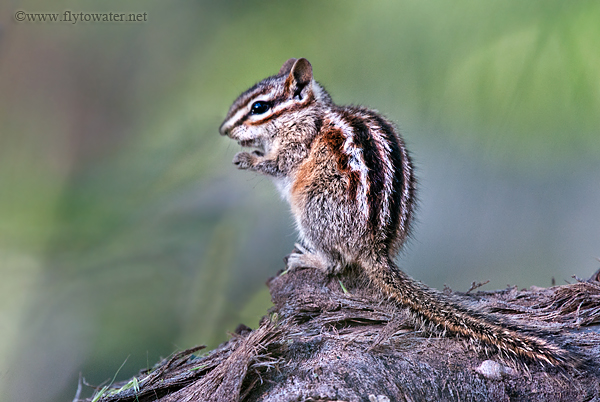
With camera and grip attached, this rig weighs in around 13 pounds. I often carry this lens without a pack, and shoot it hand held. Mature bull elk in areas where hunting is prevalent are a cagey bunch, and opportunities can last only seconds.
In this case, however, I hiked over an area roughly the size of the Louisiana Purchase and didn't catch a single glimpse of elk hide.
As I was making the steep descent back to the vehicle, I came across a common Least Chipmunk, neotamias minimus.
A few things jumped out at me when I spotted this little guy.
- He was facing towards the sun, allowing for the all-important catch light to be reflected in his eye. This is a small detail that is always on my mind when photographing animals.
- The chipmunk was positioned on a log that would give the foreground some texture, as well as a little elevation from the grasses on the forest floor.
- Most interesting was the pattern of pine needles and leaves in the foliage beyond the perch. I immediately knew this would make for a soft, dappled, pleasing background.
The final step involved compositional fundamentals.
- It is key in wildlife portraits to shoot at eye level. I had to get very close to the ground to accomplish this, but it's important because downward angles in photography weaken the subject's presence in the image.
- The chipmunk's eye is located 1/3 of the frame from the top edge, which is a foundational element of the Rule of Thirds as it applies to portraits.
- Lastly, I chose a position that allowed the chipmunk's tail to enter at the corner, creating a natural leading line for the eye to easily follow into the photo.

Nikon D300
Nikon 400mm f/2.8 AF-S VR (hand held) - f/5.6, 1/250
LensCoat Camoflauge
Equivalent Optical Magnification: 8x
Sitka Gear Open Country Camo
Distance to Subject: 20 feet
Nikon 400mm f/2.8 AF-S VR (hand held) - f/5.6, 1/250
LensCoat Camoflauge
Equivalent Optical Magnification: 8x
Sitka Gear Open Country Camo
Distance to Subject: 20 feet
Labels:
Animals,
Chipmunk,
Composition,
How to,
How-to,
Least,
Neotamius Minimus,
Photograph,
Photography,
Wildlife
Sunday, August 14, 2011
Fly to Water Expeditionary Vehicle
During some of my recent off-blog time, the build has been continuing on the 2nd generation TroutSnatcher. This rig started life as a Toyota Tundra TRD Rock Warrior, but as is all too common with "stockers" it wasn't yet a keeper and needed to grow up.
OEM-edition pickups tend to be immensely practical. While seated in the driver's position you can generally reach down and access ground-dwelling forbs and berries without the hassle of a dismount. The downside of practicality is that you are frequently mistaken for the driver of a Subaru Brat or Chevy El Camino, neither of which are known for staggering off-road capabilities.
The first order of business in this case was to eliminate what I call the Tutu Effect. Due to a variety of boring reasons, stock trucks tend to have wheels and tires that are slightly recessed into the fenders. When viewed from the front or rear, this creates a silhouette not unlike a ballet dancer in a tutu - bulbous at the hips and tapering down to a more narrow profile where the rubber meets the road. Good for a plié, not so good for a 4x4.
To rectify this situation I added a set of XD 798 Addicts in an 18x9 size, with a more appropriate offset to fill out the wheel wells and widen the stance slightly. Wrapped around the alloys are 35-inch ProComp Extreme A/T tires, which I've used several times in the past. I have found these meats to be a very happy medium between reasonable highway ride and off-road performance.

Next on the list: Cold air intake and exhaust upgrades.
OEM-edition pickups tend to be immensely practical. While seated in the driver's position you can generally reach down and access ground-dwelling forbs and berries without the hassle of a dismount. The downside of practicality is that you are frequently mistaken for the driver of a Subaru Brat or Chevy El Camino, neither of which are known for staggering off-road capabilities.
The first order of business in this case was to eliminate what I call the Tutu Effect. Due to a variety of boring reasons, stock trucks tend to have wheels and tires that are slightly recessed into the fenders. When viewed from the front or rear, this creates a silhouette not unlike a ballet dancer in a tutu - bulbous at the hips and tapering down to a more narrow profile where the rubber meets the road. Good for a plié, not so good for a 4x4.
To rectify this situation I added a set of XD 798 Addicts in an 18x9 size, with a more appropriate offset to fill out the wheel wells and widen the stance slightly. Wrapped around the alloys are 35-inch ProComp Extreme A/T tires, which I've used several times in the past. I have found these meats to be a very happy medium between reasonable highway ride and off-road performance.

Getting enough air under the rig to clear the bigger rolling stock was accomplished with a ProComp 6-inch suspension lift.
Changing the wheel offset results in having about 2" of rubber outside the fender. Some states frown on this condition and may issue an equipment citation - but it also causes road debris to flip onto the painted body panels. It's well worth adding a set of Bushwhacker Pocket-Style Fender Flares for a little extra coverage, as well as the assurance the truck will pass a safety inspection.
Finally there's a set of powder coated N-Fab Nerf Steps, which provide both rocker panel armor as well as making entry/exit more convenient given the Tundra's higher cruising altitude.
Changing the wheel offset results in having about 2" of rubber outside the fender. Some states frown on this condition and may issue an equipment citation - but it also causes road debris to flip onto the painted body panels. It's well worth adding a set of Bushwhacker Pocket-Style Fender Flares for a little extra coverage, as well as the assurance the truck will pass a safety inspection.
Finally there's a set of powder coated N-Fab Nerf Steps, which provide both rocker panel armor as well as making entry/exit more convenient given the Tundra's higher cruising altitude.
Next on the list: Cold air intake and exhaust upgrades.
I'm Back
Alright, the blog is back in action!
I took the month of July off as a hiatus to welcome a new addition to the family. Fly to Water Jr. was born 6/30. While he has initially cut seriously into my fishing time, I do appreciate his arrival during local temperatures that have not been optimal for trout feeding activity.
Mrs. Fly to Water and I have felt extremely blessed during this time. We have a great group of family and friends, and express our appreciation for all of the collective kindness that has come our way. Mom & baby are doing well and the little guy is starting to establish a pretty good grip on cork too!
I took the month of July off as a hiatus to welcome a new addition to the family. Fly to Water Jr. was born 6/30. While he has initially cut seriously into my fishing time, I do appreciate his arrival during local temperatures that have not been optimal for trout feeding activity.
Mrs. Fly to Water and I have felt extremely blessed during this time. We have a great group of family and friends, and express our appreciation for all of the collective kindness that has come our way. Mom & baby are doing well and the little guy is starting to establish a pretty good grip on cork too!
Sunday, June 26, 2011
Silver Wilkinson
I wanted to share another great tie by Rocky Maley. This is a Silver Wilkinson shot at 4-times life size. Adding color to the shot is a day lily, which I back-lit using a Nikon SB800 strobe on location.
Rocky can be contacted by e-mail: maleyqh@ortelco.net
Rocky can be contacted by e-mail: maleyqh@ortelco.net
Wednesday, May 25, 2011
On the Rocks - Rocky Maley
At the Wasatch Fly Tying & Fishing Expo, Rocky Maley tossed me one of his salmon flies. I thought I'd share a quick shot of this beauty because he wraps some mean mylar.
This a 3:1 supermacro, so it's three times life size in the image.
If you are interested in contacting Rocky, you can reach him at maleyqh@ortelco.net.
This a 3:1 supermacro, so it's three times life size in the image.
If you are interested in contacting Rocky, you can reach him at maleyqh@ortelco.net.
Monday, May 9, 2011
Fishtopia
In the world of fishermen, fantasies abound. As an example, consider the following completely outlandish and unlikely scenario:
You arrive on location for a day on the water, planning to pursue the prized species of your choice. Awaiting you is a well-maintained, late model drift boat ready to embark. The on-board cooler has been filled with your food and beverage of choice.
Nothing too unusual for a guided outing so far, and no suspicions are aroused. During a non-fantasy outing, the guide then emerges from his vehicle. He is a bedraggled individual, bleary-eyed from lack of sleep the night before. He stares at you with a morose, far-away look through sleep-sodden eyes and breaks the predawn silence with a belch that wakes up every bullfrog within a 10 hectare radius. This is likely to be one of his more pleasant biological emissions as the day progresses.
Allowing our minds to stray, let us instead imagine a slender blonde lithely exiting the guide vehicle, attired in some aesthetically pleasing shorts. Braids keep her golden locks at bay, because she is all business. Barking a few initial orders lets it be known who runs the show. While certain stereotypes attempt to crowd their way to the front of the mind about this being a man's game, quality work at the oars quickly puts all concerns soundly to rest.
The fictitious blonde proceeds to put you into the most fishy water around, pausing only to grab you an ice cold beverage the instant you begin to feel in the least bit parched.
Approaching a stretch where some technical casting is required, you festoon the branches on shore with a series of macho yet ineffectual casts. It turns out the archer fish is among the few species that will strike at a streamer a full 6 feet above the surface of the water. Your petite guide assists with fly retrieval, and then adroitly performs numerous and flawless casts in order to demonstrate proper technique. She hands the rod back to you with a snide remark, something like "Now keep this bug out of the damn cabbage!"
Sound preposterous? I would wholeheartedly agree if it wasn't for the fact that the scene described above materialized right before my eyes this weekend. Some lanky, fleece-vested type loosely associated with WorldCast Anglers claimed to have something to do with Missy's formidable skills on the sticks - but history teachers are notorious for sweeping exaggerations. If you don't believe me consider this: Following the War of 1812 (actually taking place in 1812, 1813, 1814, and 1815) came a period known as The Era of Good Feelings. It turns out that during this time, there were numerous BAD FEELINGS which were swept under the carpet, ultimately exploding into The Panic of 1819. High school history teachers have collectively refused to address this glaring issue by renaming the span from 1816-1824 "The Era of Mixed Feelings."
You arrive on location for a day on the water, planning to pursue the prized species of your choice. Awaiting you is a well-maintained, late model drift boat ready to embark. The on-board cooler has been filled with your food and beverage of choice.
Nothing too unusual for a guided outing so far, and no suspicions are aroused. During a non-fantasy outing, the guide then emerges from his vehicle. He is a bedraggled individual, bleary-eyed from lack of sleep the night before. He stares at you with a morose, far-away look through sleep-sodden eyes and breaks the predawn silence with a belch that wakes up every bullfrog within a 10 hectare radius. This is likely to be one of his more pleasant biological emissions as the day progresses.
Allowing our minds to stray, let us instead imagine a slender blonde lithely exiting the guide vehicle, attired in some aesthetically pleasing shorts. Braids keep her golden locks at bay, because she is all business. Barking a few initial orders lets it be known who runs the show. While certain stereotypes attempt to crowd their way to the front of the mind about this being a man's game, quality work at the oars quickly puts all concerns soundly to rest.
The fictitious blonde proceeds to put you into the most fishy water around, pausing only to grab you an ice cold beverage the instant you begin to feel in the least bit parched.
Approaching a stretch where some technical casting is required, you festoon the branches on shore with a series of macho yet ineffectual casts. It turns out the archer fish is among the few species that will strike at a streamer a full 6 feet above the surface of the water. Your petite guide assists with fly retrieval, and then adroitly performs numerous and flawless casts in order to demonstrate proper technique. She hands the rod back to you with a snide remark, something like "Now keep this bug out of the damn cabbage!"
Sound preposterous? I would wholeheartedly agree if it wasn't for the fact that the scene described above materialized right before my eyes this weekend. Some lanky, fleece-vested type loosely associated with WorldCast Anglers claimed to have something to do with Missy's formidable skills on the sticks - but history teachers are notorious for sweeping exaggerations. If you don't believe me consider this: Following the War of 1812 (actually taking place in 1812, 1813, 1814, and 1815) came a period known as The Era of Good Feelings. It turns out that during this time, there were numerous BAD FEELINGS which were swept under the carpet, ultimately exploding into The Panic of 1819. High school history teachers have collectively refused to address this glaring issue by renaming the span from 1816-1824 "The Era of Mixed Feelings."
Thursday, May 5, 2011
The Patagonia Journal
If you haven't checked out The Patagonia Journal - you're missing out. Head on over and take in some great photography and scenes from extraordinary places.
Click on the image to visit:
Click on the image to visit:
Monday, April 25, 2011
PhoDOGraphy
A week ago I enjoyed the opportunity to attend a field trial event held in Utah by the National Vizsla Association (NVA). Since this was a formal, judged event there were not many opportunities for photography, but it was a great experience to see some extremely well-trained pointers in action.
While there I was speaking with a trainer who was interested in capturing better images of dogs in the field. The first question that came up was, "What is the most important piece of equipment that makes the biggest difference?"
My response was simple - "Your kneecap."
I went on to explain that the biggest mistake most people make when photographing dogs is to shoot standing up, creating a strong downward angle from the camera to the subject.
In 2-dimensional space, a downward angle makes the subject appear less prominent as it occupies a weaker position within the frame. The next time you see one of those campaign ads about dogs and cats that are in need of rescue, take note of the camera angle. It will always be high, looking down at the animals to create a feeling of helplessness and dependence. This is done intentionally. Typically these are the qualities you want to avoid in photographing sporting breeds where strength, athleticism, power, and confidence are the elements we are seeking to portrait.
Kneeling down and lining up the lens at eye level is the key to creating a strong, powerful presence for subjects like hunting dogs.
On Saturday while fishing in Wyoming I took a few shots of Brika (my favorite German Shorthaired Pointer that I don't own myself) to illustrate. Dropping to one knee poses a few problems out in the sticks where mud, cactus, rocks, and all manner of detritus usually make kneeling a real pain in the patella. Regardless, perspective is always paramount and foremost in my mind when looking to capture man's best friend.
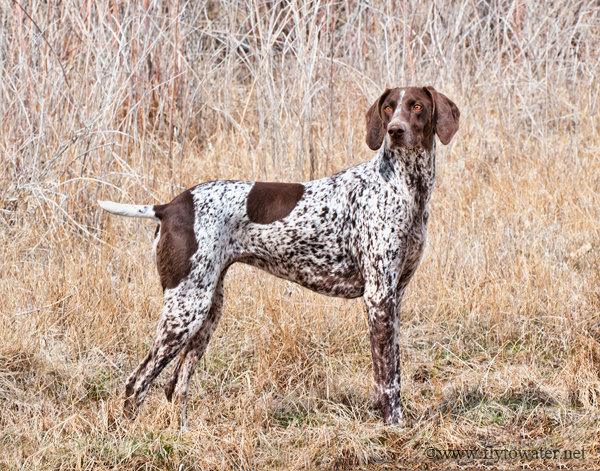
While there I was speaking with a trainer who was interested in capturing better images of dogs in the field. The first question that came up was, "What is the most important piece of equipment that makes the biggest difference?"
My response was simple - "Your kneecap."
I went on to explain that the biggest mistake most people make when photographing dogs is to shoot standing up, creating a strong downward angle from the camera to the subject.
In 2-dimensional space, a downward angle makes the subject appear less prominent as it occupies a weaker position within the frame. The next time you see one of those campaign ads about dogs and cats that are in need of rescue, take note of the camera angle. It will always be high, looking down at the animals to create a feeling of helplessness and dependence. This is done intentionally. Typically these are the qualities you want to avoid in photographing sporting breeds where strength, athleticism, power, and confidence are the elements we are seeking to portrait.
Kneeling down and lining up the lens at eye level is the key to creating a strong, powerful presence for subjects like hunting dogs.
On Saturday while fishing in Wyoming I took a few shots of Brika (my favorite German Shorthaired Pointer that I don't own myself) to illustrate. Dropping to one knee poses a few problems out in the sticks where mud, cactus, rocks, and all manner of detritus usually make kneeling a real pain in the patella. Regardless, perspective is always paramount and foremost in my mind when looking to capture man's best friend.

Getting low and shooting at eye level will give your pup a more commanding presence in the photo and create a stronger connection with the viewer. The photographer's willingness to mess up a nice pair of jeans and hork down ibuprofen for a few days after the shoot makes a bigger difference than any choice of gear.
Labels:
Bird Dog,
Dog,
German,
GSP,
How to,
Photograph,
Photography,
Pointer,
Shorthair,
Shorthaired
Friday, April 22, 2011
Blog Rollin'
As I find new blogs that are worth following, I add them inconspicuously to my "bloggification" section for easy access. I thought I'd take a few minutes to highlight 3 sites that have yet to block me from making infantile comments:
 If you haven't checked out Kirk Werner's digs, make sure to start with his world famous Dirty Harry & Flyfishing post complete with movie posters of upcoming Clint Eastwood features.
If you haven't checked out Kirk Werner's digs, make sure to start with his world famous Dirty Harry & Flyfishing post complete with movie posters of upcoming Clint Eastwood features.

Rebecca Garlock, AKA "The Outdooress" became an international woman of mystery by facing down a field mouse within the confines of a sleeping bag in the pitch blackness of night. Check out her post Of Mice and Mummy Bags if you haven't known the thrill of battling a perverted rodent armed only with a thong.
Last but not least is the new blog of Jim Browning, titled Two Guys, Wet Waders, and Flies. Jim is a class act and I have been enjoying the photography that both he and Kevin Browning share on the site. Click on the image below to visit - these guys are showing a lot of promise behind the lens.

 If you haven't checked out Kirk Werner's digs, make sure to start with his world famous Dirty Harry & Flyfishing post complete with movie posters of upcoming Clint Eastwood features.
If you haven't checked out Kirk Werner's digs, make sure to start with his world famous Dirty Harry & Flyfishing post complete with movie posters of upcoming Clint Eastwood features.
Rebecca Garlock, AKA "The Outdooress" became an international woman of mystery by facing down a field mouse within the confines of a sleeping bag in the pitch blackness of night. Check out her post Of Mice and Mummy Bags if you haven't known the thrill of battling a perverted rodent armed only with a thong.
Last but not least is the new blog of Jim Browning, titled Two Guys, Wet Waders, and Flies. Jim is a class act and I have been enjoying the photography that both he and Kevin Browning share on the site. Click on the image below to visit - these guys are showing a lot of promise behind the lens.

Labels:
Angler,
Jim Browning,
Kirk Werner,
Outdooress,
Rebecca Garlock,
Unaccomplished
Friday, April 15, 2011
Telephoto Fishing - The Trilogy
Speculation has been running wild among as many as 7 Fly to Water readers as to whether or not the wildly successful Telephoto Fishing series would bloat into a gratuitous trilogy.
By taking decisive action, I hope to avoid the possibility of this extreme tension spilling over into the weekend.
Part III - SIMPLIFICATION
Fly fishing photography, especially when it comes to the fish themselves, often involves unpredictable action sequences. Separating yourself from the fray and shooting at longer focal lengths makes it easier to concentrate on one aspect of the scene unfolding dynamically before your eyes.
Wide angle lenses have the capability to include so much in the frame, that a clear focal point and strong composition often become the casualties of hurried decision making.
Longer focal lengths limit field of view, and can therefore be an aid to simple, strong compositions. There were plenty of additional elements involved in the scene below: Angler, shoreline, fly rod, horizon, sky, clouds...each could have been included with a different lens choice. Going telephoto allowed me to easily exclude them all. I wanted to capture the final moment of the fight, with no distractions. Fish, net, water - the only 3 objects in the frame.
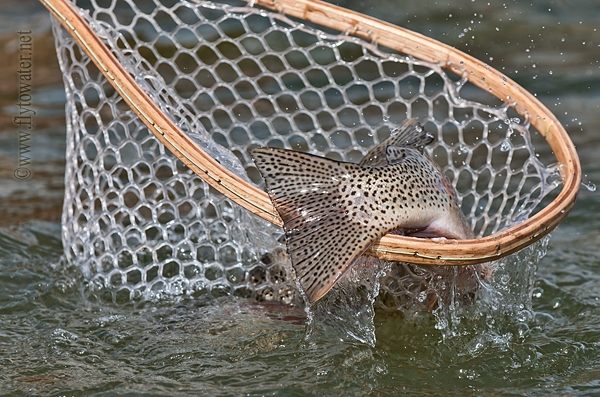
By taking decisive action, I hope to avoid the possibility of this extreme tension spilling over into the weekend.
Part III - SIMPLIFICATION
Fly fishing photography, especially when it comes to the fish themselves, often involves unpredictable action sequences. Separating yourself from the fray and shooting at longer focal lengths makes it easier to concentrate on one aspect of the scene unfolding dynamically before your eyes.
Wide angle lenses have the capability to include so much in the frame, that a clear focal point and strong composition often become the casualties of hurried decision making.
Longer focal lengths limit field of view, and can therefore be an aid to simple, strong compositions. There were plenty of additional elements involved in the scene below: Angler, shoreline, fly rod, horizon, sky, clouds...each could have been included with a different lens choice. Going telephoto allowed me to easily exclude them all. I wanted to capture the final moment of the fight, with no distractions. Fish, net, water - the only 3 objects in the frame.

Picking one aspect of the proceedings to focus on is great practice for capturing action with wider lenses. Even though you can see more at wide angles, achieving a compelling image is still about anchoring the photo in an element that draws attention. Mentally narrowing your focus is a skill that can be developed by physically limiting field of view through telephoto optics.
The point of this little 3-part diddy is that the end is really about the beginning. Rather than picking the day's kit based on portability and convenience - choose instead to decide what you hope to accomplish. When simplicity of composition is the goal - complicate your packing arrangements and lug the long lens.
The point of this little 3-part diddy is that the end is really about the beginning. Rather than picking the day's kit based on portability and convenience - choose instead to decide what you hope to accomplish. When simplicity of composition is the goal - complicate your packing arrangements and lug the long lens.
Labels:
Action,
fly fishing,
How to,
Photography,
Telephoto
Monday, April 11, 2011
Telephoto Fishing Part Deux
OK, so you've mastered how to isolate your subject with the telephoto lens and create a nice, creamy background which focuses attention right where you want it.
Now we can move on to the second installment in our multi-part series entitled:
Part II - COMPRESSION
Photographers have the ability to distort perspective within the frame. Making focal length choices is not arbitrary, but has a very important impact on how the end result is presented to the viewer.
The perceived distances between the foreground, subject, and background are elements that can and should be consciously controlled.
Compression is the term for making distances appear shorter than they are in real life. Women have been doing this for eons even before photography was invented, but for our purposes we will discuss only the relative distances within an image. Long focal lengths are the visual equivalent of a trash compactor - effectively squeezing foreground, subject, and background elements together.
The sage brush behind well-known whitefish guide Casey Birkholz (below) was about 35 feet to the rear. Using a pontoon boat I created some distance and shot at 200mm, compressing the photo and making the background appear much closer.

Even though almost half the frame in this shot is background, I did not want the viewer's eye to be drawn deeper into the image and beyond the subject. Use of compression made the distances appear artificially short, resulting in a more controlled portrait.
Perspective is a vital arrow in the quiver. Zoom lenses allow for a certain amount of laziness, because the photographer can stay in one place while zooming in or out to fill the frame. Doing so is a beginner's mistake! Distances and focal lengths CHANGE the resulting image dramatically. Make your focal length and compositional choices first, then move your body to accommodate the vision.
Ask not what your zoom can do for you, but what you can do with your zoom.
Now we can move on to the second installment in our multi-part series entitled:
Part II - COMPRESSION
Photographers have the ability to distort perspective within the frame. Making focal length choices is not arbitrary, but has a very important impact on how the end result is presented to the viewer.
The perceived distances between the foreground, subject, and background are elements that can and should be consciously controlled.
Compression is the term for making distances appear shorter than they are in real life. Women have been doing this for eons even before photography was invented, but for our purposes we will discuss only the relative distances within an image. Long focal lengths are the visual equivalent of a trash compactor - effectively squeezing foreground, subject, and background elements together.
The sage brush behind well-known whitefish guide Casey Birkholz (below) was about 35 feet to the rear. Using a pontoon boat I created some distance and shot at 200mm, compressing the photo and making the background appear much closer.

Even though almost half the frame in this shot is background, I did not want the viewer's eye to be drawn deeper into the image and beyond the subject. Use of compression made the distances appear artificially short, resulting in a more controlled portrait.
Perspective is a vital arrow in the quiver. Zoom lenses allow for a certain amount of laziness, because the photographer can stay in one place while zooming in or out to fill the frame. Doing so is a beginner's mistake! Distances and focal lengths CHANGE the resulting image dramatically. Make your focal length and compositional choices first, then move your body to accommodate the vision.
Ask not what your zoom can do for you, but what you can do with your zoom.
Labels:
Compression,
fly fishing,
How to,
Photography,
Telephoto
Thursday, April 7, 2011
Telephoto Fishing - Part I
Rod, reel, line, vest, chest/hip/backpack, leaders, tippets, fly boxes, flies, floatant, forceps, clippers, hook sharpener, leader straightener, net, waders, wading boots, wading belt, wading jacket, strike indicators, hip flask...
These are just a few of the things the average fly angler will festoon themselves with while out enjoying a day on the water. In order to avoid rolling around a humongous gear ball with our legs, like a dung beetle only on a much larger scale, fishermen often tend to economize in the camera department. Telephoto lenses taking up the same amount of space as a foot-long hoagie sandwich tend to get left at home.
I usually subscribe to this less-is-more approach myself. The telephoto lens (generally defined as a focal length greater than 100mm) does have a number of distinct advantages for fishing imagery.
Why sacrifice your 12" Meatball Marinara in favor of a tele? Backing away from the subject and shooting at longer focal lengths has some advantages. The key is to understand and visualize the types of images you hope to capture in advance, making it easier to pick the right tool for the job.
Part I - Bokeh, or Out of Focus Backgrounds
Isolation draws attention to the main subject of a photograph, which can be accomplished by rendering backgrounds that are smooth, soft, and not distracting to the viewer. One easy method to accomplish this is to simply back off, and shoot at 200mm or 300mm. Leave some distance between the subject and the background, and the result is great bokeh.
These are just a few of the things the average fly angler will festoon themselves with while out enjoying a day on the water. In order to avoid rolling around a humongous gear ball with our legs, like a dung beetle only on a much larger scale, fishermen often tend to economize in the camera department. Telephoto lenses taking up the same amount of space as a foot-long hoagie sandwich tend to get left at home.
I usually subscribe to this less-is-more approach myself. The telephoto lens (generally defined as a focal length greater than 100mm) does have a number of distinct advantages for fishing imagery.
Why sacrifice your 12" Meatball Marinara in favor of a tele? Backing away from the subject and shooting at longer focal lengths has some advantages. The key is to understand and visualize the types of images you hope to capture in advance, making it easier to pick the right tool for the job.
Part I - Bokeh, or Out of Focus Backgrounds
Isolation draws attention to the main subject of a photograph, which can be accomplished by rendering backgrounds that are smooth, soft, and not distracting to the viewer. One easy method to accomplish this is to simply back off, and shoot at 200mm or 300mm. Leave some distance between the subject and the background, and the result is great bokeh.
Labels:
Background,
Blur,
Bokeh,
fly fishing,
How to,
Photography,
Telephoto,
Zoom
Thursday, March 24, 2011
Eye of the Beer-Holder
As a public service I am hereby raising awareness about in-wader beverage storage among the fly fishing community. The technique that is being demonstrated here by Worldcast guide Casey Birkholz presents the angler with a number of advantageous benefits.
Happiness: Note the gleeful and upbeat attitude permeating the countenance, and the complete absence of worldly concern. Casey is the epitome of wellness, which is being made possible by the ease of access to what he terms a "barley pop." The hen rainbow trout avoids direct eye contact in the hope that our angler will not become overly enthusiastic, and also place her in his waders by mistake.
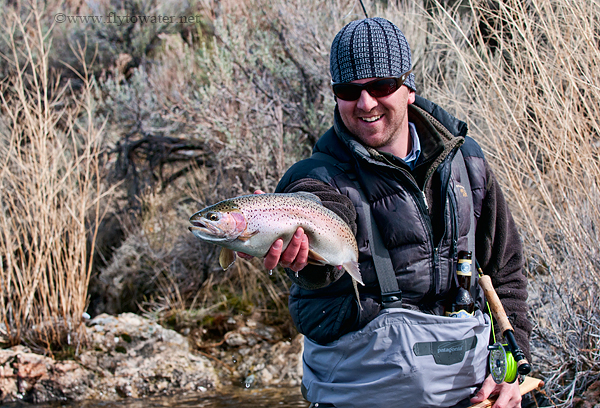
Happiness: Note the gleeful and upbeat attitude permeating the countenance, and the complete absence of worldly concern. Casey is the epitome of wellness, which is being made possible by the ease of access to what he terms a "barley pop." The hen rainbow trout avoids direct eye contact in the hope that our angler will not become overly enthusiastic, and also place her in his waders by mistake.

Safety: Crude systems such as the Beer Guzzler Hat violate considerable airspace above and to the sides of the fly angler. Obvious casting hazards are the unavoidable result as well as the heartbreak of backlash during a presentation. The added cranial load of a hat-based system will also increase stress on the neck and spine, resulting in a lack of fishing comfort. The risk of a hook-punctured can and the associated LOB, or Loss Of Beverage, is greatly reduced under the Birkholz Method. Notice how weight is evenly distributed by the wader harness in an ergonomic fashion.
Alert reader Frank Reid pointed out a few dangers that even I had not anticipated HERE. The follies of using a Camelbak® for carbonated liquids include:
Cooling: Arriving at a sufficient depth brings cooling waters into close contact with your beverage of choice, providing on-site refrigeration. The breathable wader membrane is able to keep the label dry during the chilling cycle, preventing the catastrophic loss of grip that is the downfall of coolers everywhere.
If this information helps just one angler, my post will not have been in vain. Bottoms up!
Alert reader Frank Reid pointed out a few dangers that even I had not anticipated HERE. The follies of using a Camelbak® for carbonated liquids include:
- Soft tissue injury resulting from over-pressurization of the closed contrivance, causing the end cap to become a projectile. It's all fun and games until someone loses an eye.
- Getting turned into a "reverse taco" as the shoulder straps become the sportswear equivalent of a reticulated python.
- Proptosis. This is the medical term for the abnormal displacement of the eyeballs, causing them to protrude unnaturally from the orbits, or eye sockets.
Cooling: Arriving at a sufficient depth brings cooling waters into close contact with your beverage of choice, providing on-site refrigeration. The breathable wader membrane is able to keep the label dry during the chilling cycle, preventing the catastrophic loss of grip that is the downfall of coolers everywhere.
If this information helps just one angler, my post will not have been in vain. Bottoms up!
Friday, March 18, 2011
Open Water
During my formative years I was a fan of Transformers. Among my all-time favorites were the Constructicons - a group of individual transformer vehicles that had the added benefit of being able to combine themselves into one giant robot: Devastator.
There was great anticipation and excitement whenever a birthday or Christmas would roll around because a new Constructicon was always a distinct possibility.
Today the only thing that rivals the unbridled enthusiasm I experienced as a kid is Spring's banishment of ice-holes. I believe it was Lewis Carroll who wrote:
Beware the Ratfinky my son!
The jigs that bite, the spoons that snatch!
Beware the vexilar flashers, and shun
The waxworm-baited catch!
I am paraphrasing, of course, but it was something to that effect. There is nothing quite like the year's first stillwater outing. Upon arrival, you peel off 80 feet of line into your stripping basket. After a few pleasant false casts, a double-haul builds line speed and you feel the rod load... only to unleash Hell's own line bastard! Your sinking lines haven't been used all winter and now have more memory than a scorned spouse.
I tend to be far too giddy about throwing the first soft water loops of the year to bother with taking photos. It felt great to feel some aggressive takes this week as rainbows targeted crayfish in the shallows. Some of the strikes were remarkably close to shore and highly visual. I did pause briefly to catalog this trip's typical rod bender:
I also enjoyed hucking what has become one of my 2 favorite stillwater rods: The Sage TCX 697-4. Having some extra length at 9-foot 6-inches gives me additional punch for the frequently windy conditions on lakes and impoundments across the West. The TCX has a softer tip than the previous TCR, providing more control, but does not seem to sacrifice anything in the way of distance. The color of the blank is just outstanding too, especially in direct sunlight. The other go-to stick in this category is the Sage Z-Axis 796-4, which adds backbone for bigger fish.
Attached to the TCX on this trip was the Lamson Vanquish 7/8LT - which continues to be a really impressive piece of hardware. Even though the drag system in the lighter version of the Vanquish is not quite as robust as big brother's, I would not hesitate to choose this option for bonefish, snook, or baby tarpon to save wear and tear on the casting arm.
If you haven't seen my review of the 7/8LT, I have product photography and additional thoughts here: LAMSON VANQUISH REVIEW
This weekend will find me chasing more rainbows - although I'm guessing I will be on the stick more often than behind the lens once again. I hope to see a few of you on the water.
There was great anticipation and excitement whenever a birthday or Christmas would roll around because a new Constructicon was always a distinct possibility.
Today the only thing that rivals the unbridled enthusiasm I experienced as a kid is Spring's banishment of ice-holes. I believe it was Lewis Carroll who wrote:
Beware the Ratfinky my son!
The jigs that bite, the spoons that snatch!
Beware the vexilar flashers, and shun
The waxworm-baited catch!
I am paraphrasing, of course, but it was something to that effect. There is nothing quite like the year's first stillwater outing. Upon arrival, you peel off 80 feet of line into your stripping basket. After a few pleasant false casts, a double-haul builds line speed and you feel the rod load... only to unleash Hell's own line bastard! Your sinking lines haven't been used all winter and now have more memory than a scorned spouse.
I tend to be far too giddy about throwing the first soft water loops of the year to bother with taking photos. It felt great to feel some aggressive takes this week as rainbows targeted crayfish in the shallows. Some of the strikes were remarkably close to shore and highly visual. I did pause briefly to catalog this trip's typical rod bender:
I also enjoyed hucking what has become one of my 2 favorite stillwater rods: The Sage TCX 697-4. Having some extra length at 9-foot 6-inches gives me additional punch for the frequently windy conditions on lakes and impoundments across the West. The TCX has a softer tip than the previous TCR, providing more control, but does not seem to sacrifice anything in the way of distance. The color of the blank is just outstanding too, especially in direct sunlight. The other go-to stick in this category is the Sage Z-Axis 796-4, which adds backbone for bigger fish.
Attached to the TCX on this trip was the Lamson Vanquish 7/8LT - which continues to be a really impressive piece of hardware. Even though the drag system in the lighter version of the Vanquish is not quite as robust as big brother's, I would not hesitate to choose this option for bonefish, snook, or baby tarpon to save wear and tear on the casting arm.
If you haven't seen my review of the 7/8LT, I have product photography and additional thoughts here: LAMSON VANQUISH REVIEW
This weekend will find me chasing more rainbows - although I'm guessing I will be on the stick more often than behind the lens once again. I hope to see a few of you on the water.
Subscribe to:
Posts (Atom)
